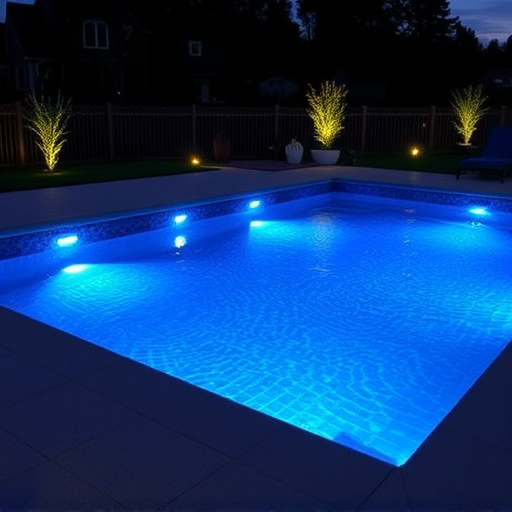Inground pool safety heavily relies on proactive measures like advanced swimming pool alarms, addressing drowning risks, electrical hazards, and unauthorized access. These alarms, featuring surface wave sensors, pressure-sensitive mats, contact sensors, and foam detection systems, offer diverse protection options. Correct installation, regular maintenance (including battery checks and sensor cleaning), and smartphone app integration ensure optimal performance. Best practices include clear safety protocols, fencing, active supervision, and secure gates to foster a safe environment for swimmers and visitors alike.
Inground pools offer a refreshing retreat, yet they pose unique safety risks. Understanding these dangers is the first step towards safeguarding your loved ones. This comprehensive guide delves into the critical aspect of pool safety, focusing on swimming pool alarms designed specifically for inground pools. From assessing risks to selecting and maintaining the right alarms, we equip you with essential knowledge to foster a secure aquatic environment. Implement best practices and stay proactive with these expert tips, ensuring your inground pool is a haven, not a hazard.
Understanding the Risks of Inground Pools
Inground pools present unique risks that require proactive safety measures, especially given their permanent nature and potential hazards. Unlike above-ground models, which can be easily removed or covered when not in use, inground pools are fixed features that demand constant vigilance. One of the critical aspects of ensuring pool safety is the implementation of effective alarm systems. Swimming pool alarms for inground pools serve as vital early warning devices, alerting both pool owners and neighbors of potential dangers. These alarms can detect the presence of a person or object in the water, preventing accidental drowning or injuries.
The risks associated with inground pools are multifaceted. They include not only the obvious danger of drowning but also potential electrical hazards from exposed wiring or faulty equipment. Additionally, chemical exposure from cleaning products and the risk of slips and falls on pool decks contribute to the overall safety challenges. By integrating advanced swimming pool alarms into their security measures, homeowners can mitigate these risks, providing peace of mind and ensuring a safer environment for both regular swimmers and visitors.
The Role of Swimming Pool Alarms
Swimming pool alarms play a vital role in ensuring the safety of individuals around inground pools. These advanced devices are designed to detect potential hazards and alert swimmers and pool owners promptly. When installed correctly, swimming pool alarms can offer an extra layer of protection against accidental drowning, especially for young children or unsupervised individuals.
For inground pools, specific types of alarms like surface wave sensors and pressure-sensitive mats are recommended. Surface wave sensors detect disruptions on the water’s surface caused by movement, while pressure-sensitive mats identify changes in pressure beneath the pool’s floor. These advanced technologies enable early detection of potential risks, allowing swift action to be taken, thus enhancing overall pool safety.
Types of Swimming Pool Alarms for Inground Pools
Swimming pool alarms for inground pools are essential safety features designed to protect against accidental drowning and unauthorized access. These alarms come in various types, each offering unique benefits. One common type is the contact sensor alarm, which detects movement across a designated zone, typically installed at the pool’s edge. When someone enters the pool area without proper supervision or a key fob, the alarm sounds, alerting both the pool owner and neighbors.
Another type is the foam detection system, which monitors the surface of the water. This system uses sensors to track changes in the water’s level and will trigger an alarm if it detects a significant drop, indicating someone may be in distress or has fallen into the pool. For enhanced security, some inground pools are equipped with key-operated locks and alarms that integrate with home security systems, allowing for remote monitoring and control via smartphone apps.
Installing and Maintaining Pool Safety Alarms
Installing swimming pool alarms for inground pools is a crucial step in ensuring the safety of your family and guests. These alarms are designed to detect movement at the water’s surface, triggering an alert that can notify you and nearby individuals about potential hazards. When selecting an alarm system, consider factors such as pool size, depth, and the number of zones you want to monitor. Some advanced models offer features like remote monitoring and customizable alerts through smartphone apps.
Regular maintenance is key to keeping your pool safety alarms functioning optimally. Check the batteries regularly and replace them as needed. Ensure the sensors are clean and free from debris or mineral deposits that could interfere with their operation. Testing the alarm system periodically will help you identify any issues early on, ensuring that it’s always reliable when you need it most.
Best Practices for Ensuring Inground Pool Safety
When it comes to inground pool safety, implementing best practices is paramount. One of the most effective tools in your safety arsenal are swimming pool alarms designed specifically for these types of pools. These alarms serve as an early warning system, alerting you or nearby lifeguards to potential hazards such as unauthorized access or sudden immersion. Regularly testing and maintaining these alarms is crucial; ensure they function properly by conducting routine checks and replacing batteries as needed.
In addition to alarms, establishing clear safety protocols and fencing off the pool area are essential measures. Keep a close eye on children around the pool, ensuring they understand pool safety rules and limitations. Supervise actively, especially during unsupervised swim times. Consider installing a secure gate or fence around the pool perimeter to prevent unauthorized access, further enhancing your pool’s safety features.
